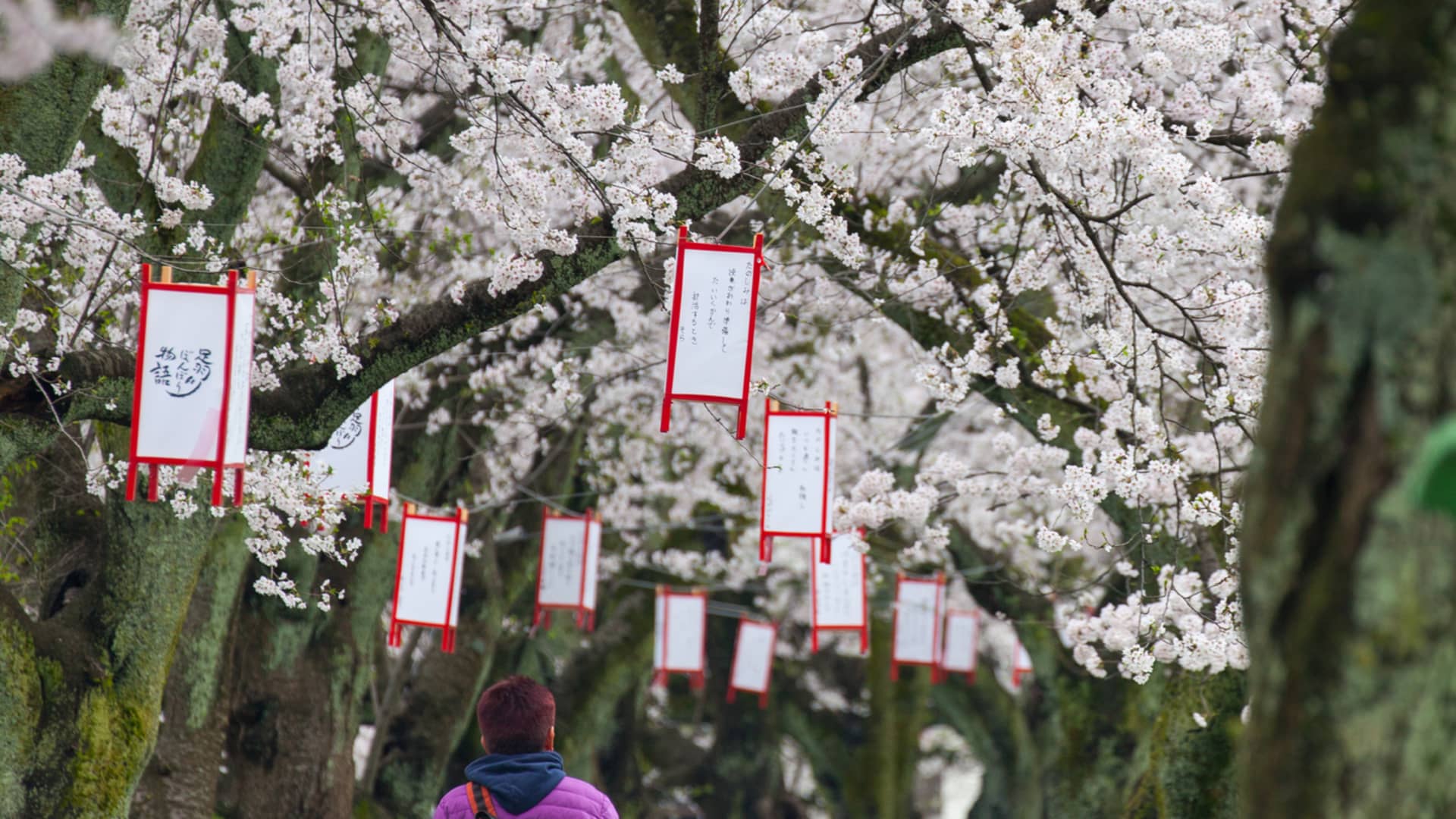Japan is launching a brand new high-speed bullet practice, or shinkansen, extension on Saturday that can make an under-the-radar prefecture way more accessible to vacationers.
The coastal Fukui Prefecture is a few 185 miles west of Tokyo. The brand new practice will go via the town of Fukui, the city of Awara and different locations guidebooks hardly ever point out, earlier than reaching the port city of Tsuruga, including some 78 miles to the Hokuriku Shinkansen’s current Tokyo-to-Kanazawa service.
As soon as it begins on March 16, the route will open a door to part of Japan — recognized for dinosaurs, Zen meditation and soothing hot-spring baths — the place few worldwide vacationers go.
Jurassic Japan
Of all of the stops on the brand new extension, Fukui makes the very best base for visiting the sights of the prefecture.
Dinosaurs are one of many space’s primary attracts, from the robotic replicas at Fukui Station to the native mascot, a smiley, inexperienced dino named Juratic, whose face is emblazoned on souvenirs all through the town.
There’s good motive for that. Near 80% of Japan’s dinosaur fossils had been found in Fukui, one thing the Fukui Prefectural Dinosaur Museum in Katsuyama does a superb job of detailing in Japanese and English.
Slightly below an hour from Fukui Station on the trundling Katsuyama-Eiheiji rail line, the cavernous museum homes a group of stays and reveals on the existence and demise of dinosaurs, plus life-size animatronics of a menacing Tyrannosaurus rex and a long-necked herbivore. Fossil digs within the related Katsuyama Dinosaur Park add a hands-on component that is particularly well-geared for households.
Discovering Zen and sizzling springs
On the native practice again to Fukui, vacationers concerned with studying about Zen Buddhism can hop off at Eiheijiguchi Station to go to Eiheiji, a temple and monastery based within the 1200s by the legendary Zen priest and scholar Dogen.
Vacationers with a few hours can discover the temple buildings, but it surely’s additionally doable to plan an in a single day temple keep that features choices for zazen meditation classes and conventional plant-based Buddhist meals.
A Geisha walks via a efficiency corridor in Awara, Japan.
Buddhika Weerasinghe | Getty Photos Information | Getty Photos
With an additional day in Fukui, an alternative choice is to take the brand new shinkansen to Awara for a spot of conventional pampering. Like many small sizzling spring cities in Japan, the rationale most individuals go to Awara is to spend an evening at a ryokan inn, the place they soak in mineral-rich baths, slip into yukata robes, unwind in tatami mat guestrooms and bask in kaiseki-ryori dinners that includes a photogenic array of small in-season dishes.
However there’s lots to do in Awara past baths and ryokans, with hands-on experiences like glassblowing and ceramics at Kanaz Forest of Creation — a 200,000 square-meter forest residence to artwork installations and strolling trails. Rural areas even have orchard-picking — strawberries within the spring and blueberries, grapes and Asian pears in the summertime.
The tip of the road
The brand new shinkansen service ends within the city of Tsuruga. Arguably, there’s much less to linger for right here, however these with just a few hours to spare can go to just a few standout sights accessible through the city bus.
Suishouhama Seashore, close to the city of Tsuruga.
Arief Juwono | Second | Getty Photos
The Kehi-no-Matsubara beachside pine grove is a nationally designated website of scenic magnificence.
Additionally alongside the coast is the Port of Humanity Museum, which particulars how Jewish refugees from Poland and Lithuania arrived in Tsuruga within the Nineteen Forties after being granted particular visas by Japanese diplomat Sugihara Chiune. It is estimated that Sugihara saved a number of thousand Jews from Nazi focus camps.
Vacationers can even comply with the footsteps of the Seventeenth-century haikuist Matsuo Basho, who visited Tsuruga’s Kehi Jingu shrine to see the autumnal full moon throughout a journey immortalized within the haiku-punctuated travelogue “The Slender Street to the Deep North.”
Kehi-no-Matsubara in Tsuruga, Japan.
Mixa | Getty Photos
The shrine has been rebuilt a number of instances since Basho’s go to, however the model he noticed actually left an impression. “The air of the shrine was hushed within the silence of night time,” he wrote, “and the moon via the darkish needles of pine shone brilliantly.”
Whereas Basho left Tsuruga plodding slowly south, right this moment categorical trains run from Tsuruga right down to Kyoto in just below an hour, or southeast to Nagoya in 90 minutes. Vacationers can even reboard the brand new shinkansen for the three-hour experience again to Tokyo.

